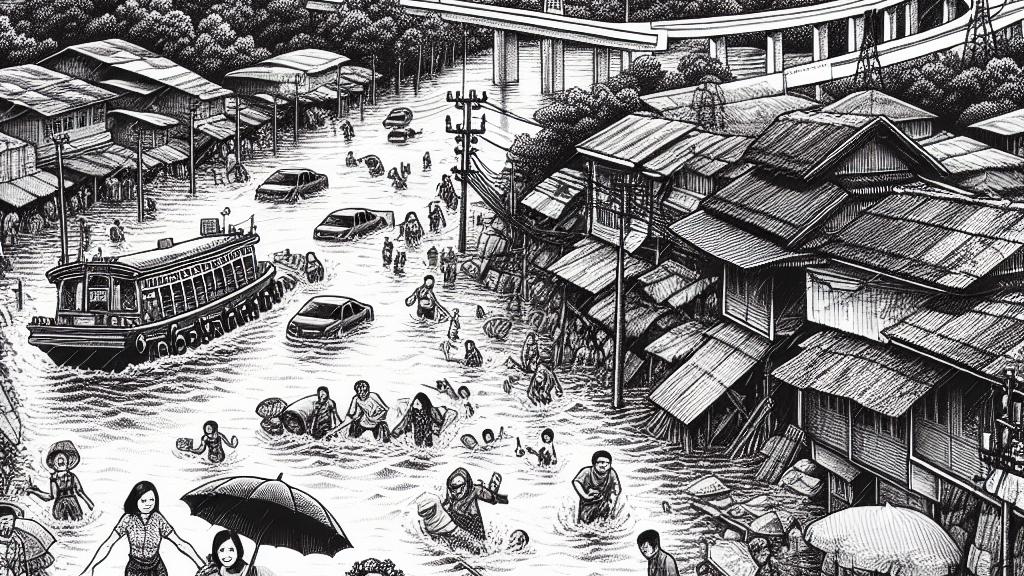Bangkok and 10 Provinces on High Alert for Flooding as Dam Discharges Increase
Overview
- Bangkok and ten other provinces in Thailand face an imminent flooding threat as heavy rains continue.
- The Chao Phraya Dam's decision to boost water discharge rates is alarming local authorities.
- Residents are urged to prepare for rising water levels that could significantly impact daily life.

The Urgent Flood Risk in Bangkok and Surrounding Areas
Bangkok, the bustling capital of Thailand, has once again found itself on high alert for flooding, accompanied by ten other provinces in the fertile Chao Phraya Basin. On September 26, the Royal Irrigation Department revealed that the Chao Phraya Dam, located in Chai Nat province, would increase its water discharge from a steady rate of 1,498 cubic meters per second. This announcement sent ripples of concern among residents, particularly those living in vulnerable areas like Ayutthaya and Suphanburi. Imagine the scene—a vibrant market suddenly submerged, streets transformed into rivers, and families forced to evacuate their homes because of rising waters. The reality of flooding is more than just a potential crisis; it represents a serious threat to lives and livelihoods across the region.
The Role of the Chao Phraya Dam and Its Impact
The Chao Phraya Dam, a marvel of Thai engineering and the nation's first large-scale dam, is at the epicenter of this flood risk. Officials have indicated that the discharge could reach as high as 2,000 cubic meters per second, a move necessary due to heavy rainfall and substantial runoff. Such action could elevate water levels in nearby canals by up to 1.5 meters. Picture streets filled with swirling water, small businesses under threat, and schoolchildren unable to attend classes due to unsafe conditions. Past floods have taught harsh lessons, and the specter of history looms large as officials and citizens alike prepare for what may come. It’s vital that everyone understands the urgency of the situation and the potential ramifications it holds for communities and infrastructure.
Community Preparedness and Essential Safety Measures
With flooding on the horizon, community readiness is paramount. The National Weather Service has issued vital guidance on navigating this challenging landscape, empowering individuals with life-saving tips and information. One key message is clear: do not drive through flooded streets, as doing so can be perilous. Instead, turning around and seeking higher ground is always the safer choice. Furthermore, residents should stay updated with reliable news sources for timely weather alerts. By participating in community safety drills and sharing personal experiences, citizens can cultivate resilience and preparedness. Together, these practices not only enhance individual safety but also foster a strong, united community capable of facing adversities head-on. In the face of nature's unpredictability, being informed and prepared can make all the difference.

Loading...